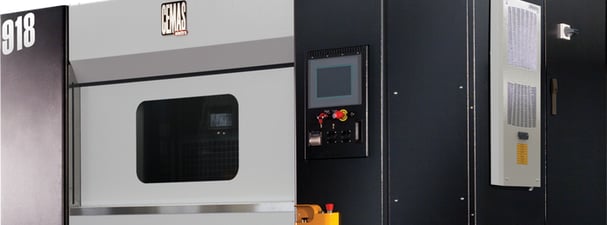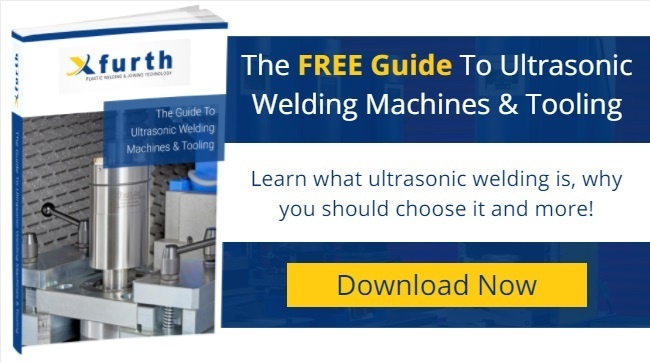
The vibration welding of plastic components has been around for several decades, and is a proven, flexible and efficient process for joining thermoplastic components. Still, many misconceptions about vibration welding equipment abound. This article will attempt to clarify some of the most common misunderstandings.
1) Vibration Welding Isn’t Reliable
This is likely the most prevalent misconception about vibration welding, and it couldn’t be further from the truth. The precision with which vibration welding equipment joins components is not only reliable, but creates extremely strong joints that can be designed to be completely air and water tight. Vibration welding is also consistent and able to produce the same high-quality joints over and over again.
2) It’s A Difficult Process
Vibration welding is actually a very simple process. Two plastic components are held together and rubbed against one another to generate friction. The machine controls the pressure and the amount of friction by altering amplitude. The welding process involves the melting of the plastic at the joint of the two components. Finally, a smooth and hermetically sealed weld is the result of forcing melted plastic away from the welding area and cooling under a sustained force from the machine.
3) Vibration Welding Offers Fewer Benefits Than Other Welding Types
Contrary to popular belief, vibration welding offers a range of benefits that go beyond other plastic welding methods.
Not only does vibration welding require zero preparation of the surface, but it can be used on several types of thermoplastic, including reinforced and crystalline foam. This process is capable of welding most materials, even if they are dissimilar. As well, the transparency and thickness of the component parts do not affect the quality of the process.
4) Vibration Welding Is Not Suitable For Both Large And Small Components!
Actually, the vibration welding process allows for parts in varying sizes to be welded. Across the range there are standard machines available for the manufacture of components for any application. Of course, a larger machine will allow for larger items to be welded than a smaller machine would.
Some vibration machines will allow several parts to be welded simultaneously, by method of using multi cavity tooling.
On the Cemas standard vibration welding machines it is possible to even weld exceptionally large components such as an automotive instrumentation panel or thermoplastic manufactured haulage pallet, or small components such as door visors and automotive lighting. With fully adjustable force and amplitude, movements can be minimised for small and delicate easy to weld parts but can be maximised for when a more aggressive weld is required.
5) Hybrid Vibration Machines Don’t Produce Better Components
Hybrid vibration equipment was designed to eliminate the issues experienced with standard vibration welding machines i.e. dust and the risk of damage to small and fragile components. The two-stage process of hybrid vibration pre heats the welding area by form of IR emitters prior to vibration welding, all within the footprint of the same machine.
Hybrid welding can prevent damage and marking on critical surfaces (due to reduced force required to weld), as well as significantly reducing the build-up of dust. Interestingly, hybrid vibration equipment also allows for a higher weld direction plane angle of up to +/-20 degrees, giving designers greater flexibility for styling without compromising on the weld quality.
For manufacturers of automotive lighting where welds are often visible through clear lenses then Hybrid welding can produce a very aesthetically pleasing join.
Of course, even with all of the benefits that vibration welding offers, it may not be the most feasible option for your particular needs. As a designer, you may find that ultrasonic, infra-red or spin welding offers what you need, because above all, it’s about nailing down the ideal process for the products you’re trying to bring to reality.
Whatever you’re requirements, the many different machines manufactured by CEMAS and XFURTH will complete the job you need them to as well as provide you with after-sales service that exceeds your expectations.
Believing in myths about vibration welding can cause its many advantages to be overlooked. When in doubt about the benefits of vibration welding for your application, it’s always best to consult with professionals who understand the limits of the technology, as this can save you much frustration, money and time.
For a free feasibility study for any new or existing projects don’t hesitate to contact XFURTH today.
Making Smart Use Of Vibration Welding Technology
For many businesses, vibration welding has the potential to boost productivity and save production costs when welding plastics. To find out more about vibration welding and its technical requirements, please take a look at our free Vibration Welding Guide. The eBook offers a detailed explanation of the process compared with ultrasonic and other welding methods, explains how it is used and how to access the best technology.





